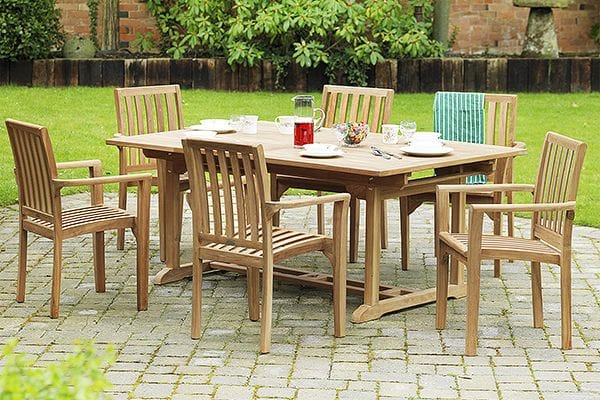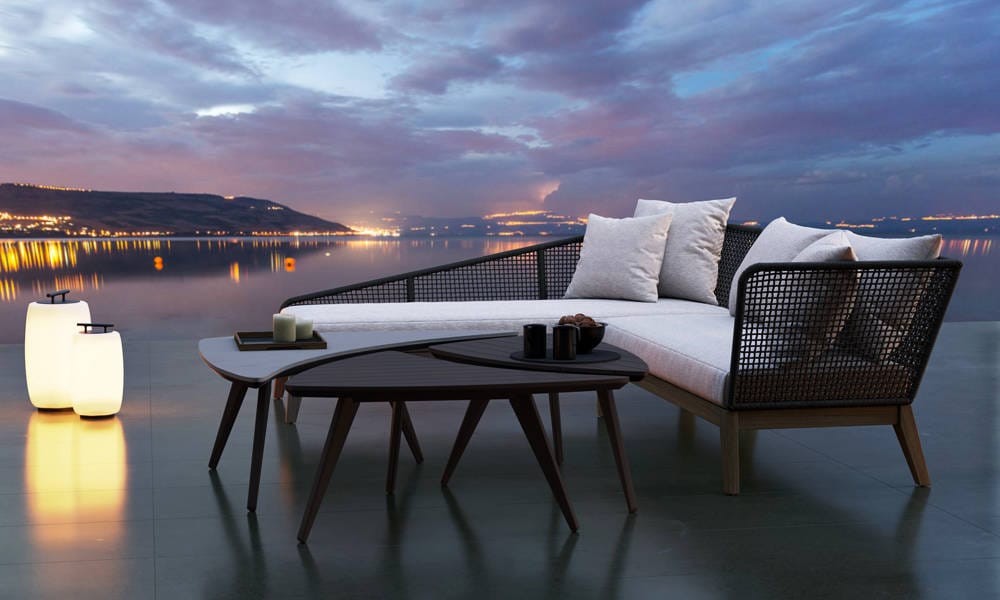When it comes to outdoor furniture, durability and weather resistance are essential factors to consider. Outdoor furniture is exposed to various weather conditions, including rain, sunlight, extreme temperatures, and humidity. Therefore, choosing the right materials that can withstand these elements is crucial to maintaining the longevity and aesthetics of your outdoor furniture. In this article, we will explore some of the top weather-resistant and durable materials for outdoor furniture.
1. Teak Wood

Teak wood is widely regarded as one of the best materials for outdoor furniture. It is naturally resistant to moisture, rot, and insects, making it ideal for outdoor use. Additionally, teak wood has a high oil content that helps it withstand extreme weather conditions. Over time, teak wood develops a beautiful silver-gray patina, adding to its natural appeal. Proper maintenance, such as regular cleaning and applying teak oil, can help prolong its lifespan.
2. Aluminum
Aluminum is a lightweight and durable material that is commonly used in outdoor furniture. It is highly resistant to rust and corrosion, making it ideal for coastal areas or regions with high humidity. Aluminum furniture is also easy to clean and maintain, requiring minimal effort. Additionally, aluminum can be easily molded into different shapes and designs, offering a wide range of options for outdoor furniture styles.
3. Wicker
Wicker furniture is made from weaving natural or synthetic fibers around a frame. Synthetic wicker, such as resin or polyethylene, is highly weather resistant and can withstand prolonged exposure to sunlight and moisture. It is also resistant to fading, cracking, and peeling. Wicker furniture is lightweight, making it easy to move and rearrange in outdoor spaces. To maintain its appearance, regular cleaning and occasional washing with mild soap and water are recommended.
4. Stainless Steel
Stainless steel is renowned for its durability and resistance to corrosion. It is a popular choice for outdoor furniture due to its sleek and modern appearance. Stainless steel furniture is low maintenance and can withstand harsh weather conditions without rusting or deteriorating. However, it is important to note that stainless steel furniture can become hot when exposed to direct sunlight for extended periods, so using cushions or adding shade is recommended for added comfort.
5. Polywood
Polywood is an innovative material made from recycled plastic. It mimics the look and feel of real wood while being highly resistant to weather damage. Polywood furniture does not require staining, painting, or sealing, as it is impervious to moisture, rot, and insects. It is also fade-resistant, ensuring that the furniture maintains its vibrant colors even after prolonged exposure to sunlight. With its eco-friendly properties and durability, polywood is an excellent choice for outdoor furniture.
Choosing weather-resistant and durable materials for outdoor furniture is essential to ensure its longevity and appearance. Teak wood, aluminum, wicker, stainless steel, and polywood are all excellent options that offer different features to suit various preferences and styles. Whether you prefer the natural beauty of teak wood or the modern appeal of stainless steel, investing in high-quality outdoor furniture made from these materials will enhance your outdoor living space for years to come.
Related posts
Recent Posts
Why “Standard Size” Windows Don’t Exist? Window Replacement Experts in Athens, AL Get the Perfect Fit
When it comes to home renovations, windows play a pivotal role in both aesthetics and functionality. Many homeowners in Athens, AL, might assume that window sizes are standardized, but this is a common misconception. In reality, the concept of “standard” window sizes is more myth…
Why do regular AC tune-ups extend the life of your cooling system?
Air conditioning systems are substantial investments, typically costing thousands of dollars to replace. Without regular maintenance, these systems deteriorate faster than necessary. Depending on the manufacturer, neglected HVAC systems can lose up to 5% of their efficiency yearly without proper maintenance. This decline happens gradually,…



